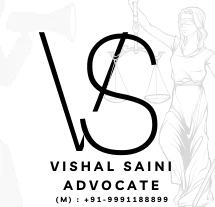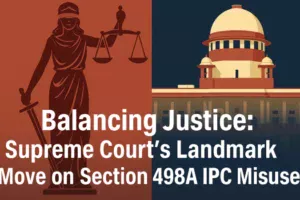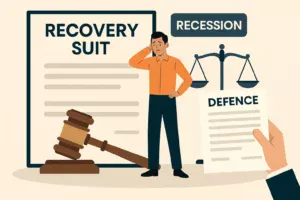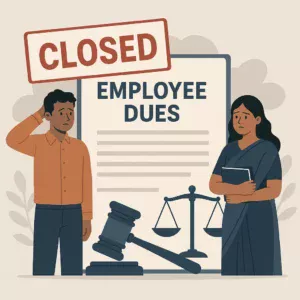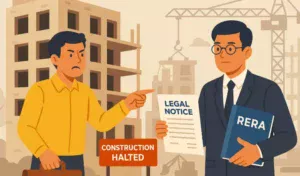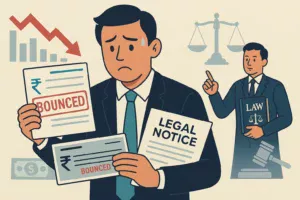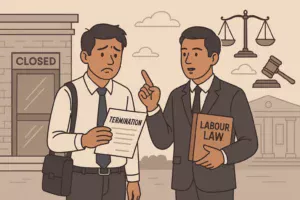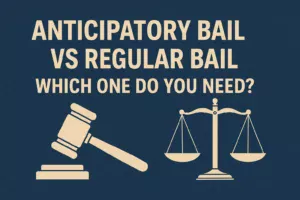In this article we have explained about Acid Attack Litigation: Seeking Justice
Acid Attack Litigation: Seeking Justice
The Harrowing Reality of Acid Attacks
In understanding the landscape of acid attack litigation, it’s essential to delve into the harrowing reality faced by victims. Acid attacks inflict severe physical, emotional, and psychological trauma, leaving victims with lasting scars and a profound impact on their lives. This section sheds light on the prevalence of acid attacks, the motivations behind such heinous crimes, and the urgent need for legal measures to address and combat this deeply disturbing phenomenon.
Acid attacks are not just assaults; they are acts of extreme violence that often result in disfigurement, disability, and, tragically, sometimes even death. Victims endure not only the excruciating pain of the attack itself but also the long and arduous journey of recovery, both physically and emotionally.
The Physical and Psychological Consequences
Physical Trauma: The corrosive nature of acid causes severe burns, tissue damage, and scarring upon contact with the skin. Victims suffer excruciating pain, requiring extensive medical treatment, including surgeries, skin grafts, and rehabilitation. The visible scars justify by acid attacks serve as constant reminders of the traumatic event, affecting victims’ self-image, confidence, and social interactions.
Psychological Trauma: Beyond the physical injuries, acid attacks inflict deep psychological wounds on survivors, leading to emotional distress, post-traumatic stress disorder (PTSD), anxiety, and depression. Victims experience intense fear, anger, and shame, grappling with feelings of helplessness and vulnerability. The psychological trauma extends beyond the individual survivor, impacting their families, relationships, and overall quality of life.
Social Stigmatization: Acid attack survivors often face social stigmatization and discrimination due to their visible scars and disfigurements. They may encounter barriers to employment, education, and social integration, exacerbating feelings of isolation and marginalization. The societal stigma surrounding acid violence further compounds the psychological burden borne by survivors, hindering their recovery and reintegration into society.
Loss of Identity and Autonomy: Acid attacks rob victims of their sense of identity and autonomy, erasing facets of their physical appearance and self-expression. Survivors may struggle to reconcile their altered appearance with their sense of self, facing challenges in reclaiming their identity and rebuilding their lives. The loss of autonomy resulting from the attack undermines survivors’ agency and independence, perpetuating feelings of powerlessness and dependence on others.
Legal Framework for Acid Attack Cases
In India, acid attacks are recognized as heinous crimes that inflict severe physical and psychological harm on victims. To address the growing incidence of acid violence and ensure justice for survivors, the Indian legal system has implemented specific legal provisions and frameworks tailored to the unique nature of acid attack cases. Here’s an overview of the legal framework for acid attack cases under Indian law:
- The Criminal Law (Amendment) Act, 2013: The Criminal Law (Amendment) Act, 2013, introduced significant amendments to the Indian Penal Code (IPC) and the Code of Criminal Procedure (CrPC) to enhance the legal protection of women and survivors of gender-based violence, including acid attacks. Section 326A and 326B were inserted into the IPC to specifically address acid attacks and prescribe stringent punishments for offenders.
- Provisions under the Indian Penal Code (IPC):
- Section 326A – Punishment for Acid Attacks: This provision prescribes a minimum punishment of ten years’ imprisonment, extendable to life imprisonment, for perpetrators of acid attacks. The section also mandates compensation to be paid to the victim by the offender.
- Section 326B – Attempt to Acid Attacks: Section 326B addresses attempts to commit acid attacks, imposing similar penalties as Section 326A for offenders who attempt to cause grievous hurt by throwing acid.
- Guidelines for Regulation of Sale of Acid: The Supreme Court of India, in its landmark judgment in Laxmi vs. Union of India (2013), issued comprehensive guidelines for the regulation of the sale of acid to prevent misuse and curb the incidence of acid attacks. These guidelines include restrictions on the sale of acid, mandatory licensing for acid vendors, and the imposition of penalties for non-compliance.
- Legal Aid and Support for Victims: The legal framework also encompasses provisions for legal aid and support services to assist acid attack survivors in accessing justice and seeking redress. Victims are entitled to free legal aid under the Legal Services Authorities Act, 1987, ensuring that they have adequate representation and assistance throughout the legal process.
- Compensation and Rehabilitation: The legal framework emphasizes the importance of compensation and rehabilitation for acid attack survivors. In addition to criminal penalties, offenders are liable to pay compensation to victims as per the orders of the court. The Victim Compensation Scheme, implemented by the government and judiciary, provides financial support to survivors for medical treatment, rehabilitation, and livelihood support.
- Fast-Track Courts and Specialized Legal Mechanisms: To expedite the adjudication of acid attack cases and ensure timely justice for survivors, the Indian judiciary has established fast-track courts and specialized legal mechanisms dedicated to hearing cases of gender-based violence, including acid attacks. These specialized courts prioritize the expeditious disposal of cases and provide survivors with a supportive and victim-centric legal environment.
Seeking Justice for Victims
- Legal Recourse and Prosecution: Victims of acid attacks have the right to pursue legal recourse and seek prosecution against the perpetrators under the existing legal framework. Legal avenues include filing criminal charges, initiating civil lawsuits for compensation, and seeking redress through specialized legal mechanisms established to address gender-based violence.
- Supportive Legal Representation: Victims require access to competent and supportive legal representation to navigate the complexities of the legal process effectively. Specialized lawyers with expertise in handling acid attack cases play a crucial role in advocating for victims’ rights, ensuring their voices are heard, and pursuing justice on their behalf.
- Ensuring Accountability: Holding perpetrators of acid attacks accountable for their actions is essential to deter future incidents and uphold the rule of law. Victims and their legal representatives work towards ensuring that perpetrators face the full extent of legal consequences prescribed under the law, including imprisonment and payment of compensation.
- Victim-Centric Legal Proceedings: Victim-centric legal proceedings prioritize the needs and interests of the survivors, creating a supportive and empowering environment for them to participate in the legal process. Courts and legal authorities adopt measures to minimize re-traumatization, protect victims’ privacy, and facilitate their meaningful engagement in court proceedings.
- Access to Rehabilitation and Support Services: Seeking justice for victims goes beyond legal proceedings and encompasses access to comprehensive rehabilitation and support services. Victims require medical treatment, psychological counseling, and social support to address the physical and emotional trauma inflicted by the attack and rebuild their lives with dignity and resilience.
- Community Awareness and Advocacy: Raising awareness about the impact of acid attacks and advocating for systemic changes are integral to seeking justice for victims. Community outreach programs, public campaigns, and advocacy initiatives aim to challenge societal attitudes, combat stigma, and promote gender equality, thereby creating a more supportive and inclusive environment for survivors.
- Empowering Victims as Agents of Change: Empowering victims of acid attacks to become agents of change in their communities is a transformative aspect of seeking justice. By sharing their stories, advocating for policy reforms, and championing survivors’ rights, victims contribute to fostering a culture of accountability, compassion, and solidarity in the fight against acid violence.
Conclusion:
The Path Forward in Acid Attack Litigation
The fight against acid attacks requires a multifaceted approach, combining legal action, societal change, and comprehensive support for victims. Ensuring justice in acid attack cases is not just about punishment for perpetrators; it’s about restoring dignity and providing a path to recovery for survivors.
The Role of Society and Governments
Society and governments must work together to create a safe and supportive environment for acid attack victims. This includes implementing effective laws, providing resources for victim support, and fostering a culture of zero tolerance towards such violence.
FAQ on Acid Attack Litigation and Seeking Justice
1. What is an acid attack?
An acid attack involves throwing a corrosive substance on someone, causing severe physical and psychological harm.
2. Are acid attacks a criminal offense?
Yes, acid attacks are recognized as a serious criminal offense in many countries.
3. What are the common motives behind acid attacks?
Motives can include personal vendettas, gender-based violence, or sociocultural reasons.
4. What types of injuries do acid attack victims suffer?
Victims can suffer from severe burns, scarring, and possibly loss of sight or other senses.
5. How do acid attacks affect victims psychologically?
Victims may experience trauma, depression, and social stigmatization.
6. What laws exist to protect acid attack victims?
Many countries have specific laws for acid attacks, including harsher punishments and victim support measures.
7. How long does an acid attack case typically take in court?
The duration varies by jurisdiction but can be lengthy due to legal complexities and evidentiary requirements.
8. What challenges do victims face in the legal system?
Challenges include trial delays, accessing legal aid, and the burden of proof.
9. Is legal aid available for acid attack victims?
In many regions, legal aid or support from NGOs is available for victims.
10. How important is medical evidence in these cases?
Extremely important for proving the extent of injuries and impact on the victim’s life.
11. Can victims receive compensation?
Yes, victims can seek compensation through civil suits or victim support funds where available.
12. Are there preventive measures against acid attacks?
Some measures include regulating the sale of corrosive substances and public awareness campaigns.
13. What role do NGOs play in supporting victims?
NGOs provide crucial support, including legal aid, counseling, and advocacy.
14. How can society help acid attack victims?
By offering support, challenging stigma, and advocating for effective policies.
15. What is the role of counseling for victims?
Counseling helps victims cope with trauma and rebuild their lives.
16. How can one volunteer to help acid attack victims?
Volunteering can be done through NGOs and support groups dedicated to helping victims.
17. What are the long-term effects on victims?
Long-term effects include ongoing physical challenges, psychological trauma, and social adjustment issues.
18. How can awareness be raised about acid attacks?
Through educational campaigns, media coverage, and advocacy work.
19. What should a bystander do if they witness an acid attack?
Ensure safety first, then provide immediate assistance to the victim and call emergency services.
20. Can acid attack perpetrators be rehabilitated?
Rehabilitation depends on individual cases and the legal system, but it is possible with appropriate interventions.
21. How does the media impact acid attack litigation?
Media coverage can raise awareness but may also affect the perception of justice and victim support.
22. Are children also victims of acid attacks?
Unfortunately, yes. Children can be victims, necessitating child-specific support and legal measures.
23. What is the global prevalence of acid attacks?
The prevalence varies, with higher incidences in some regions due to sociocultural factors.
24. How does gender play a role in acid attacks?
Women and girls are disproportionately targeted in many regions, often in gender-based violence contexts.
25. What are the barriers to justice for victims?
Barriers include legal system inefficiencies, societal stigma, and lack of resources.
26. How can technology help in acid attack cases?
Technology can assist through improved evidence collection, victim support platforms, and awareness campaigns.
27. Are there international laws against acid attacks?
While there’s no specific international law, many countries have treaties and agreements to address such violence.
28. Can acid attack cases be tried in international courts?
It’s rare, but severe cases might be considered under international human rights law.
29. What can schools do to prevent acid attacks?
Schools can educate students about the consequences of acid attacks and promote a culture of respect and non-violence.
30. How can individuals contribute to the fight against acid attacks?
By staying informed, supporting victim advocacy groups, and promoting policy changes at local and national levels.
Sources:-
